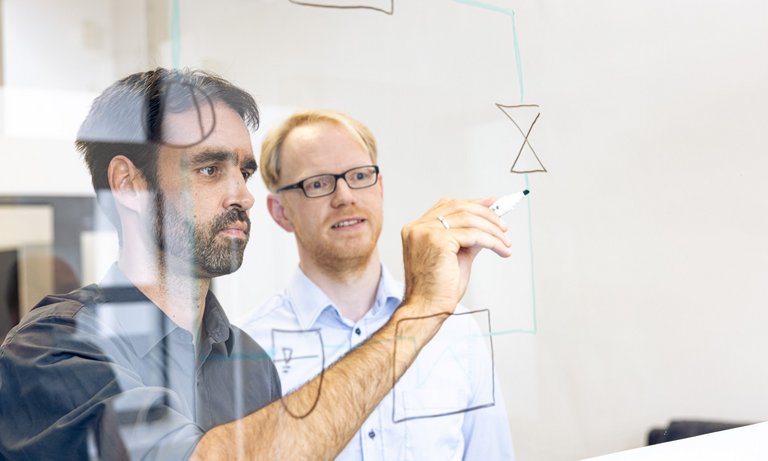0D/1D-Methods
The modeling approaches we use at TLK to represent thermal systems and their components are based either on highly detailed CFD simulations, on fast data-driven calculations, or on physically motivated 0D/1D methods. In 0D/1D methods, components are averaged over the location (0D) or discretized over the location resolved one-dimensionally (1D). The level of detail depends on the respective requirements and questions of our customers.
Fluid dynamic and electrochemical models for thermodynamic systems and their components require steady-state or dynamic balance equations to describe the energy, mass, momentum, and electric charge.
Within a control volume, the state variables are assumed to be homogeneous and large volumes are discretized into a multitude of smaller volumes. In 0D-methods, the components under investigation are averaged over a single control volume. In 1D methods, the control volumes are discretized into finite volumes to represent, for example, channel flow or heat transfer.
Other equations arise from the transport processes between the volumes. These equations describe, for example:
Depending on the simulation task, systems and their components can be described physically, or modeled taking into account characteristic quantities and maps.
Since we attach great importance to the selection of suitable model equations and numerical solvers, we can solve the hybrid differential-algebraic systems of equations (DAE) that typically occur robustly, quickly, and accurately.
Many 0D/1D models can already be found in our TIL and Clara+ libraries. We and our customers use these models to solve, for example, thermal, hydraulic, and control engineering problems. Upon customer request, we also develop custom models from validated component models in our libraries, thereby ensuring they are reliable and compatible with our libraries.
For 0D/1D system simulations, we mainly use the dedicated modeling language Modelica. Our component libraries TIL and Clara+, which are used for the simulation of complex thermal systems, are also programmed in Modelica. All of our Modelica models and libraries can be combined with other libraries such as the Modelica Standard Library (MSL). Furthermore, we have modeling expertise in the programming languages C/C++, Python, and MATLAB.
As a simulation environment for Modelica, we mainly use Dymola, but also have experience with Modelon Impact, SimulationX, and OpenModelica. These and many other simulation environments support the export and import of models according to the FMI standard. The standard enables the flexible exchange of models, so-called Functional Mock-up Units (FMUs), between simulation environments and platforms.
We use FMUs to build complex, heterogeneous systems, combining the advantages of 0D/1D models with the power of software such as GT-Suite, MATLAB/Simulink, or LabVIEW. Our Simulator Suite enables the simulation of FMUs in software such as Microsoft Excel.

